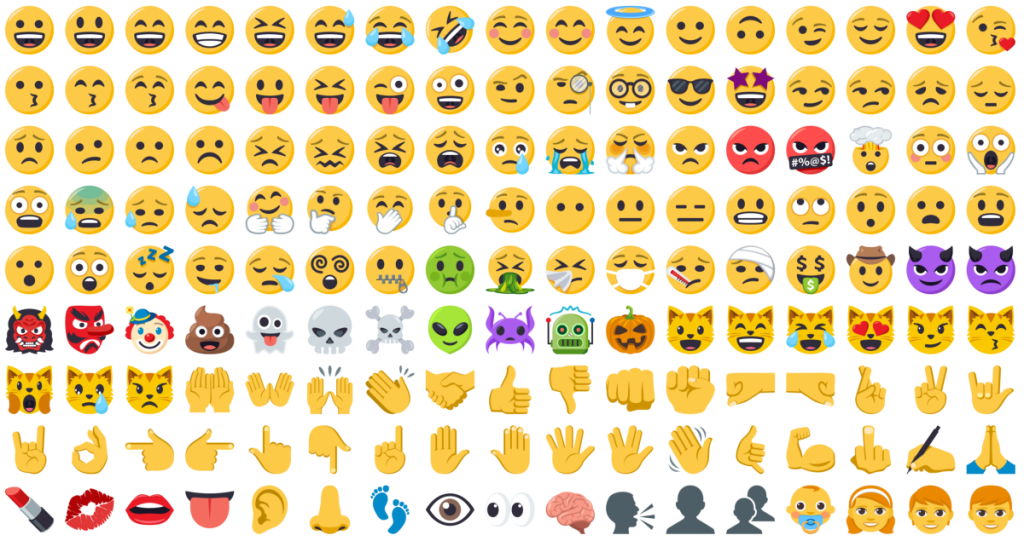The Unknown History of Emojis
An emoji is a part of this millennial messaging fad going on globally by several individuals who are acquired in using smartphones. In the current era, people love to express their emotions through emojis (emoticons), and they use them while they chat online with a person. Emojis are used in almost every informal conversation based online between two or more individuals or within-group texts.

There are several social media sites which include, Facebook, Instagram, WhatsApp, etc., where emojis are used by people to enhance the emotional intellect to an otherwise flat text. These tiny emotive characters are the first language born into this digital world.
History
Firstly, emojis were used in Japanese smartphones in the late ’90s, and since then, it has become a hallmark for the way people talk to each other. Emojis are given great importance as the words used in a conversation. Emojis are not just for people who use slang like (lol, lmao, tbh, etc.). They have been created for everyone.
In the beginning, people used to express their sarcasm, happiness, and sorrow through emoticons which were made by the user, for example – ;-), :), :-(, these initials were used by people in ways when they were not digitally created.
The first emoji was created by a Japanese, Shigetaka Kurita, in 1999. Kurita wanted to create an attractive interface to convey messages more efficiently.
The popular sim company DOCOMO’s valued wish was to create an enhanced way of communication. If there was the weather (cloudy, rainy, summers, etc.), there was no way to express these texts. Hence, emojis were a huge help to add an emotional subtext to a message. A message offered with a heart emoji added a flow of sympathy and love to the text and automatically gave a visual to the text.
In Japan, Emojis gained a lot of popularity, and rival mobile companies wanted to copy and create similar visual messaging ways of DOCOMO. In 2007, a popular software internationalization team at Google worked with Unicode Consortium, a non-profit group that worked similar to the United Nations, to maintain text standards across several computers.
Since childhood, we’ve learned that computers work with numbers. Whatever you type into the computer is encoded or showcased with a numerical code.
Through many years, in 2010, Unicode accepted the request and decided to introduce a new language of emojis for the world to use.
Timeline –
1999
Emojis were born. The initiating set included icons depicting the weather, traffic, technology, and time.
2010
The Unicode adopted several other forms of icons depicting anger, happiness, and sorrow using cat faces.
2015
Emojis served a diverse update utilizing different skin tones and similar gender couples.
2016
According to the global evolution, updates were done like weight lifting women, pride flag for the LGBTQ community, and single mothers and fathers.
2017
Characters of the emojis were used as a language and culture, like a mosquito’s emoji was used to depict illnesses like malaria and other diseases.
Emojis were made available to people outside Japan through different applications. This led the users to copy and paste emojis into their emails and texts. After a while, Apple launched its emoji keyboard in their iOS software, and Android initiated the same concept two years later. This particular change helped people to utilize emojis in everyday texts and conversations. Instead of using full texts, people started their conversations with emojis and talked them through every time.
As the emoji standards became popular, they also became abundant for the users. Every year, the Unicode Consortium added a new emoji to their lists. These ideas were gathered by people all over the world. Emojis like the bride, different types of food, dozens of plants and anima, and an establishment of all kinds of feelings and stuff used in conversations.
Design-
Designing an emoji is not that easy as it looks on the keyboards. Firstly, a new emoji is suggested within a formal proposal for the Unicode Consortium. Then these detailed proposals involve explanations of why the emoji should be added and how it might look for the user.
This aspect is very complex, and it takes up a lot of time to think about the type of emoji. For example, if the emoji is of a dish representing noodles, then should it be on a plate or a bowl, whether to add chopsticks or a fork, etc. all of this is examined by the Unicode Consortium’s sub-committee, which gathers around twice a week to decide on all the related matters.
And lastly, when the committee makes a decision, a new emoji takes place on the keyboard.\
I am Jack Wright, a blog writer based in NY City, USA. My interest lies in writing about technology and smart machines. I am a web security enthusiast also. I guide my readers about the installation and activation of antivirus software like Bitdefender ( central.bitdefender.com ). In my leisure, you can find me watching movies and playing games while eating my burgers.
Source: The Unknown History of Emojis
Comments
Post a Comment